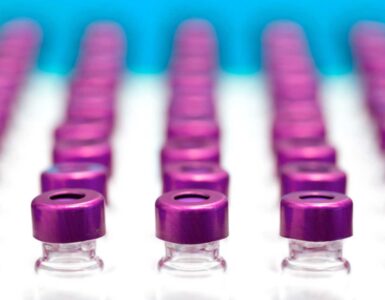Closely-held liberDi plans to initiate in the first half of 2018 the first-in-man clinical trial of its Smart Peritoneal Dialysis System, a small, portable and automatic dialysis device, which is designed to improve patient’s quality of life, and reduce treatment costs and complications.
“Patients with end-stage renal disease (ESRD) mostly travel to a dialysis center three times a week for a typically three- to five-hour procedure, while our system can complete fluid exchange in approximately 20 minutes at home, at the office or while traveling,” founder and CEO, Hezkiah Tsoory, says in an interview with BioTuesdays.
“The low utilization of home dialysis is a lost opportunity to improve patient’s quality of life and decrease healthcare costs,” he adds, quoting from a journal article published last year.
ESRD is defined as a drop in kidney function below 10% of normal function. The treatment options for these patients are either a kidney transplant or dialysis.
There are two treatment modalities in dialysis: hemodialysis, which involves cleaning a patient’s blood through a filter outside the body; while peritoneal dialysis involves introducing special fluid through a catheter into the peritoneal cavity. The peritoneal membrane around the abdomen acts as a blood filter to absorb waste products from blood vessels and removes excess fluid.
“with unique design of this product patients can safely and easily perform PD in their home. In my opinion liberDi’s product is much better than PD systems which are in the market”
According to Mr. Tsoory, only 11% of patients worldwide receive peritoneal dialysis at home because existing devices have significant limitations for patients and physicians, as well as a risk of peritonitis, an inflammation of the peritoneum that lines the inner wall of the abdomen and covers and supports most abdominal organs.
In addition, current peritoneal home dialysis systems are bulky and require a particularly cumbersome setup and complicated regimen, making this treatment unsuitable for many patients.
He suggests that physicians are also reluctant to encourage existing home dialysis treatment because of compliance issues (as high as 30%), a lack of monitoring to verify treatment outcomes for a therapy that requires a sterile environment to avoid the risk of infection.
Among other things, Mr. Tsoory says the liberDi system was designed to reduce infection through less handling of dialysis tubing. “Our system disinfects the tubing with each connection.” There is also real-time feedback for patient and doctor, enabling good control on the treatment regimen and compliance.
To begin a liberDi dialysis cycle, Mr. Tsoory said the patient follows a few simple steps: “Open the device cover and insert a disposable cartridge, which contains a pump and disinfection unit. Attach the dialysis fluid tubing and close the cover. Attach the catheter tubing to the device to start the disinfection cycle. After 30 seconds, the patient is instructed to open the catheter valve and fluid exchange begins.”
Following the procedure, the patient is instructed to close the catheter valve and remove the tubing from the machine. The disposable pump, disinfection unit and exchange fluid are discarded. The catheter tip which is part of the preinstalled catheter, is reused.
Mr. Tsoory says the liberDi system has the potential to be safer for patients and healthcare providers, and would allow more patients to take an active role in performing peritoneal dialysis at home.
“Besides allowing more patients to enjoy the benefits of dialysis at home, peritoneal dialysis provides additional potential benefits such as a longer survival period than hemodialysis (up to 5 years), better preservation of residual kidney function, decreased risk of sepsis, reduced blood pressure, needle-free treatment and fewer side effects, such as nausea, cramping and weight gain,” he adds.
Mr. Tsoory says that the liberDi Smart Peritoneal Dialysis System is a class 2 medical device in the U.S. and Europe. The company will be required to conduct safety and usability studies to register the product for a CE Mark in Europe and a 510(k) regulatory pathway with the FDA.
“There are reimbursement codes already established for automatic peritoneal dialysis equipment in the U.S.,” he adds.
In 2017, he says the company completed design and initial testing of a second prototype device in order to begin clinical testing in the first half this year. The study will enroll about 10 patients for a study in Israel.
Following regulatory submissions, liberDi together with a dialysis service provider will conduct a global post-marketing study, leading to a possible product launch in the second half of 2019, he adds.
Mr. Tsoory suggests that liberDi’s business model would consist of selling dialysis machines, disposables and software to manage patients effectively, through a medical service provider. “We also have a strong cost saving argument,” he adds.
Citing 2012 figures, Mr. Tsoory says the annual cost per patient in the U.S. for hemodialysis was $87,500 and $66,750 for peritoneal dialysis, compared with about $55,000 for the liberDi system. With 414,000 patients on hemodialysis in the U.S., he figures liberDi has the potential to save the U.S. healthcare system $13.5-billion a year.
There are an estimated 3.2 million ESRD patients worldwide, including 630,000 in the U.S., of which 2.5 million are undergoing dialysis. The size of ESRD patient population is expected to grow at a compound annual growth rate of 6.2% over the next five years driven by the rise of diabetes, hypertension, obesity and other chronic conditions.
“Virtually all patients with ESRD are candidates for peritoneal dialysis at home,” Mr. Tsoory contends. “Home care should be the default.”
• • • • •
To connect with liberDi, or any of the other companies featured on BioTuesdays, send us an email at editor@biotuesdays.com.







